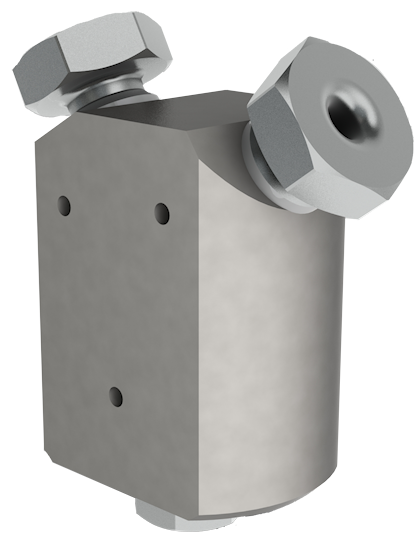Microvalve 500 bar
The idea is based on the historical free ball system with an updated design.
Documentation
The major troubles from existing microvalves on the market are the following:
- The free ball microvalves: on this valve, the main problem is coming from the big risk of leakage due to the assembling. In fact, one part of this valve insure 2 functions (seals the system from outside, and seals both circuit after closing). The platen is so fragile and closing torks not controlled. It does mean that users prefer change parts (platen, ball, o’ring) each time the start a new experimentation.
- Swagelok valves: These valves are quite reliable, but too large for entering in a cryostat, too large for entering in a Gas Loading System. They just can give good results at ambient for solid sample. Thus, the using is really limited.
- Small needle valves: Theorically, that’s a great idea to miniaturize a needle valve. Except that needle valves get all the same problem, as it’s impossible to get the same torque closing. The needle finally leaks after few run. Furthermore, the sealing system does not work in cryostatic uses.
For these reasons, many users asked for a new design of micro-valves. The idea is based on the historical free ball system with an update design in order to eliminate what users were complaining:
- We decided to remove the platen and weld it to the body’s valve in order to avoid any leakage from the circuit outside of the valve.
- The free ball gets a new design and it has been also welded to the platen, the closing hole also get a new shape in order to be used several times without parts change

